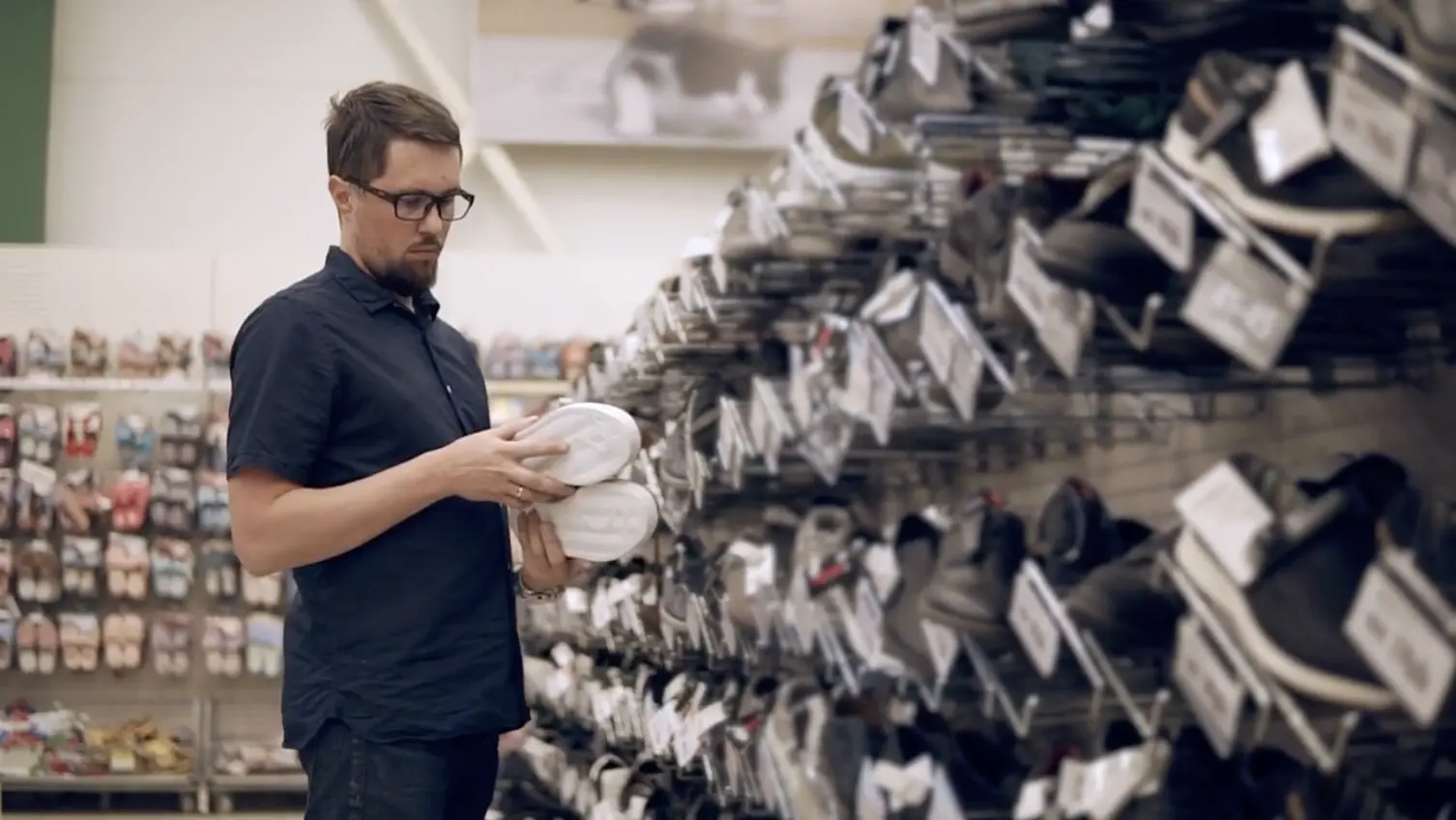The Top 20 Shoes for Restaurant Workers: Comfort and Safety Combined

Table of Content

Restaurant workers face unique challenges during their shifts, including long hours on their feet, navigating busy and often slippery environments, and ensuring top-notch service to customers.
When selecting work shoes for the restaurant environment, it is essential to prioritize certain key features. Ensure that the chosen shoes provide excellent comfort and sufficient arch support to sustain prolonged hours of standing and walking. Equally important is the non-slip grip, which is indispensable for maintaining a safe workplace.
Additionally, opt for shoes with robust and water-resistant uppers to offer adequate protection against potential hazards like falling objects or spills. Investing in durable footwear is advisable, as it will not only minimize the need for frequent replacements but also guarantee sustained performance throughout your demanding shifts. Remember, contented feet contribute significantly to the overall well-being and productivity of employees in any professional setting. In this article, we'll explore restaurant workers' top non-slip shoe options, providing both comfort and safety to help them perform at their best.
Our shoes selection
Dansko Clogs:
Renowned for their slip-resistant outsoles, excellent arch support, and cushioned comfort, Dansko Clogs are a favorite among professionals in various industries.
Website: dansko.com
Birkenstock Clogs:
Comfortable and dishwasher-friendly, Birkenstock clogs offer practicality, style, and a snug fit for all-day support.
Website: birkenstock.com
Sanitas Clogs:
Similar to Dansko clogs but with a snugger fit, Sanitas clogs are ideal for those prone to back issues and provide long-lasting durability.
Website: sanita.com
Crocs Bistro:
Designed specifically for culinary professionals, Crocs Bistro clogs boast slip-resistant treads, reinforced toes, and easy-to-clean material.
Website: crocs.com
New Balance Arishi V3:
Offering slip-resistance, cushioned insoles, and breathability, these sneakers are perfect for those who prefer athletic footwear.
Website: newbalance.com
Skechers Non-Slip Work Shoes:
Affordable and supportive, Skechers Work collection offers slip-resistant options in various styles, including classic sneakers and boots.
Website: skechers.com
Vans ' Made for Makers' Shoe Line:
Combining style with non-slip vulcanized lugged soles and liquid-repellent features, Vans are a trendy and practical choice.
Website: vans.com
Dr. Scholl's "Work"
Slip-Resistant Shoe Line: With slip-resistant outsoles, memory foam inserts, and breathable materials, Dr. Scholl's offers comfort without compromising style.
Website: drscholls.com
Keep Company Shaheen Gourmand Mid-Top Sneakers:
These vegan shoes come with non-slip rubber soles, making them both stylish and practical for restaurant work.
Website: keepcompany.com
Clove:
Initially designed for healthcare professionals, Clove sneakers offer liquid-repellent and stain-resistant features, along with odor-fighting insoles.
Website: goclove.com
Snibbs:
Orthopedic-designed shoes with a 30-day trial period, breathable support, and slip-resistant soles, providing unmatched comfort and durability.
Website: snibbs.co
Merrell Jungle Moc Pro Work Shoes:
Sturdy and lightweight leather shoes with slip-resistant rubber soles, making them perfect for restaurant environments.
Website: merrell.com
Emeril’s Footwear:
;Slip-resistant, water-resistant, and odor-resistant shoes with memory foam technology, ensuring all-day comfort and stability.
Website: emerilsfootwear.com
Hokas:
Known for their comfort and arch support, Hokas offer fluid movement between slippery environments and are slip-resistant.
Website: hokaoneone.com
Dickies Apex: MICHELIN®
WCX channeled shoe tread provides traction, making Dickies Apex a reliable choice for slip-resistance.
Website: dickies.com
New Balance 510v3:
Even support, non-skid treads, and breathability make these Dr. Cunha-recommended sneakers suitable for long shifts.
Website: amazon.com
Croc Bistro Clogs:
Similar to classic Crocs but without holes on top, these clogs offer lightweight comfort, slip-resistance, and protection from spills.
Website: crocs.com
Vans:
Classic Vans with added water resistance, support, and slip-proofing for tough jobs and long hours on your feet.
Website: vans.com
Birkenstock professional slip-resistant work shoe:
Slip-resistant clogs with a one-piece molded polyurethane construction, ensuring durability and water resistance.
Website: birkenstock.com
Emeril’s Footwear:
Slip-on and laced options with slip, water, stain, and odor resistance, thanks to patented B.A.M. memory foam technology.
Website: emerilsfootwear.com
How to choose the Best Restaurant Shoes: A Step-by-Step Approach
Step 1: Assess Your Needs
Before diving into the wide array of restaurant shoes available, take a moment to assess your specific needs. Consider the type of restaurant work you do, the surfaces you'll be walking on, and the potential hazards you may encounter. Identify key features that are essential for your comfort and safety, such as slip-resistance, arch support, and durability.
Step 2: Look for Slip-Resistance
Slip-resistance is one of the most critical factors for restaurant shoes. Look for shoes with specialized slip-resistant outsoles that provide excellent traction on wet and greasy surfaces. This feature is vital for preventing accidents and maintaining stability, especially in a fast-paced restaurant environment.
Step 3: Prioritize Comfort and Support
Restaurant workers spend long hours on their feet, making comfort and support crucial. Seek shoes with well-cushioned insoles and proper arch support to reduce foot fatigue and discomfort. Consider shoes made from breathable materials to keep your feet cool throughout the day.
Step 4: Opt for Closed-Toe Designs
Closed-toe shoes offer better protection against spills, hot liquids, and potential hazards present in restaurant kitchens. They help safeguard your toes from injuries and maintain a professional appearance.
Step 5: Check Durability and Easy Maintenance
Restaurant work can be demanding on shoes, so select pairs with durable construction to withstand constant wear and tear. Additionally, look for shoes that are easy to clean and maintain, as spills and stains are bound to happen in a restaurant setting.
Step 6: Try Different Styles
Once you've narrowed down your criteria, try on various styles and brands of restaurant shoes. Pay attention to how they fit, whether they offer ample toe room, and if the arch support feels comfortable. Walk around in the shoes to gauge their overall comfort and stability.
Step 7: Read Customer Reviews
Before making a final decision, read customer reviews and testimonials about the shoes you're considering. Real-life experiences from other restaurant workers can offer valuable insights into the shoes' performance, durability, and overall satisfaction.
Step 8: Consider Budget and Value
While quality restaurant shoes may require a bit of investment, consider them as an investment in your well-being and productivity at work. Balance your budget with the value the shoes provide in terms of comfort, safety, and durability.
Step 9: Consult Co-Workers or Industry Experts
Don't hesitate to seek recommendations from your co-workers or industry experts who have experience with specific restaurant shoe brands or styles. They may offer valuable advice based on their firsthand experiences.
Avoiding Fashion Faux Pas: What NOT to Wear as Shoes for the Restaurant
In the fast-paced and often hectic environment of a restaurant, what you wear on your feet can significantly impact your performance and safety. While comfort and functionality should be the top priorities when choosing footwear, some shoe choices can lead to unnecessary discomfort, accidents, and even potential hazards. To maintain a professional appearance and ensure your well-being, here's a list of what NOT to wear as shoes for the restaurant.
Open-Toed Sandals or Flip-Flops:
As tempting as it may be to slip on a pair of open-toed sandals or flip-flops during warm weather, they are the least suitable footwear for restaurant work. Not only do they lack proper protection for your toes, but they can also leave your feet vulnerable to spills, hot liquids, and sharp objects on the floor.
High Heels or Platforms:
While high heels may add an elegant touch to your outfit, they are impractical and unsafe for the restaurant setting. The risk of tripping, slipping, or spraining your ankle is much higher with elevated heels or platforms, especially when moving quickly between tables or in busy kitchen areas.
Fashion Sneakers with Poor Traction:
Though some sneakers may look stylish, not all of them are designed with slip-resistant soles. Wearing fashion sneakers with inadequate traction on slippery restaurant floors can lead to serious accidents, posing a risk to both yourself and your co-workers.
Flimsy Ballet Flats or Thin-Soled Shoes:
Ballet flats and thin-soled shoes may be comfortable for casual outings, but they lack the support and protection needed for long hours of standing and walking. Thin-soled shoes offer little cushioning and may lead to foot fatigue and discomfort by the end of your shift.
Stiletto Heels or Sharp-Edged Shoes:
Shoes with sharp edges or stiletto heels can damage the floor's surface and cause scratches or dents. Moreover, these shoes are more prone to getting stuck in grates, floor mats, or uneven surfaces, which increases the risk of tripping.
Slip-On Shoes with No Strap or Laces:
Slip-on shoes without a secure strap or laces may slide off your feet while you're on the move, causing you to lose balance or trip. Opt for shoes that provide a secure fit and minimize the risk of accidental slips.
Dirty or Worn-Out Footwear:
Wearing visibly dirty or worn-out shoes not only looks unprofessional but can also compromise your hygiene and comfort. Properly clean and maintain your shoes regularly to ensure a polished appearance and extend their longevity.
Unsupportive or Non-Slip Shoes:
Choosing shoes with poor arch support or inadequate slip resistance can lead to foot pain and discomfort, affecting your performance during long shifts. Invest in shoes specifically designed for restaurant work, with features like non-slip outsoles and ample support.
Frequently asked questions
- Our shoes selection
- How to choose the Best Restaurant Shoes A Step-by-Step Approach
- Assess Your Needs
- Look for Slip-Resistance
- Prioritize Comfort and Support
- Opt for Closed-Toe Designs
- Check Durability and Easy Maintenance
- Try Different Styles
- Read Customer Reviews
- Consider Budget and Value
- Consult Co-Workers or Industry Experts
- Avoiding Fashion Faux Pas What NOT to Wear as Shoes for the Restaurant
- Frequently asked questions
- Explore more
- Ready to get started?


